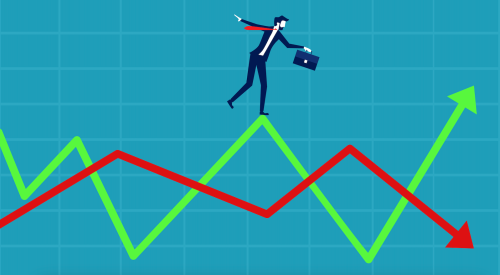For those of you who are still struggling to repay your lenders, this positive news isn't going to help you. For those of you who have started new companies or are planning for the day when a profitable business model returns, your patience is being rewarded. The "falling knife" is getting closer to the ground, and the land acquisition opportunities of a decade are just around the corner.
We are seeing the beginning of the road to recovery. In the worst markets in the country, demand for housing is bottoming out and supply is topping out. However, prices will continue to fall until demand and supply come back into balance. The best measure of balance will be when the months' supply of new and resale homes returns to normal levels in each market.
A full national recovery looks like it will take several years, with sluggish job growth preventing a strong demand recovery, and mortgage distress preventing a strong supply recovery. The markets with the strongest economies and the least resale market distress should recover first. That market does not exist today, but there are several where conditions are no longer worsening. Our national survey shows that Orlando, Fla., achieved stability recently. We are reticent to call a bottom in Orlando until the stability is proven out over a longer-time period, and the important summer months show strong tourism.
While there is significant pressure to call a bottom (particularly from stock investors), the truth is that each market will recover at a different pace and the better submarkets within an area will recover years before the worst submarkets. Early indicators of a bottoming housing market will be:
- Stable sales volumes and pricing in a number of the best-located communities
- Multiple land transactions at prices where builders can achieve a healthy margin
Neither of these is occurring yet, but we expect them to occur later this year.
ListingsEach month, we track listings volumes for hundreds of markets across the country. While markets that were slower to enter the downturn in housing continue to experience rising listings levels, we have seen listings declining in a number of markets during a time of year when seasonal factors suggest they should be rising.
These seasonal factors make it difficult to compare listings levels from one month to the next, but a year-over-year comparison, as shown in the map below, reveals pockets of metro areas where listings volumes are lower than 12 months prior. Declining listings volumes are largely concentrated in California, Florida and the Midwest, while markets like Salt Lake, the Pacific Northwest and the Carolinas show the greatest year-over-year increases. In sum, the worst markets in the country don't appear to be getting any worse.
 |
In some instances, declining listings volumes is a result of increased resale sales volumes — or at least a deceleration in the decline of sales activity. The map below shows how much the rolling 12-month resale volume has declined in many of the major markets in the last year. The areas highlighted in red are those where the decline has been the worst, and the areas highlighted in blue are those where the decline has been less dramatic in the last year. While it is nearly impossible to find a metro area where the annual resale sales volume is higher than one year ago, we are beginning to see some markets where the rolling 12-month totals are stabilizing at very low levels, suggesting that monthly sales activity is better than the same months last year. We expect this map to show many more blue metro areas one year from now as sales volumes begin to bottom out.
 |
As a result of declining listings and increasing sales activity, the months of supply in certain metro areas is beginning to come down as well. However, stabilization is not likely to occur until demand and supply come back into balance at reasonable affordability levels. Although healthy resale inventory levels vary market-by-market, we believe a 4- to 6-month supply is appropriate. In some of the hardest-hit markets in Florida and California, resale inventory tops 2 years of supply! It will take time — and lower prices — to clear this massive amount of inventory, but trends in recent months suggest that the path to recovery is beginning.
Rising foreclosures and REO sales is contributing to the rebound in activity while it is simultaneously driving prices down significantly. In several instances (some of the Central California metro areas, for example), these foreclosure or REO sales comprise more than half of the sales in the market in recent months.
Risk FactorsThe three biggest risk factors to recovery are:
- MORTGAGE COSTS AND AVAILABILITY Inflation is putting upward pressure on interest rates, and the tremendous risk that Fannie, Freddie and FHA continue to incur could be curtailed. Although the government wants to encourage these groups to keep lending, what shareholder wants them to make high LTV mortgages in a falling price environment?
- THE ECONOMY While plenty of horrible things are occurring in the economy, and the consumer is up to his eyeballs in debt, I believe that our entrepreneurial society will find new ways to make money and the recession will not be steep.
- DEBT LEVELS Our country is also up to its eyeballs in debt. Future earnings need to be used to repay debt, which will slow reinvestment and growth as we come out of this.
The road to recovery is beginning. You still need to deal with the legacy problems of existing communities and the debt associated with them, but the fundamentals show that they are not getting any worse. Once demand and supply return to a balanced level, we expect debt and equity to return to the market and land activity to pick up. Before you buy any land, ask yourself this question: "Does this submarket need this community at this price range?" Once the answer is yes, you will know that the market has recovered.
| Author Information |
| John Burns helps many of the largest companies in the industry with strategy and monitoring market conditions. He can be reached at jburns@realestateconsulting.com. |












